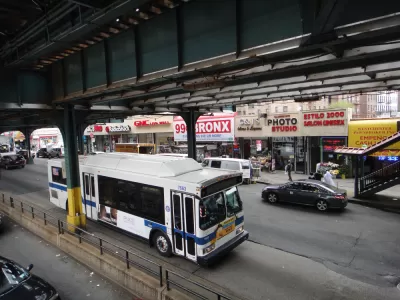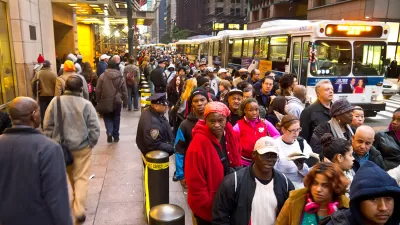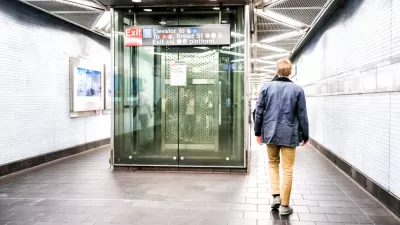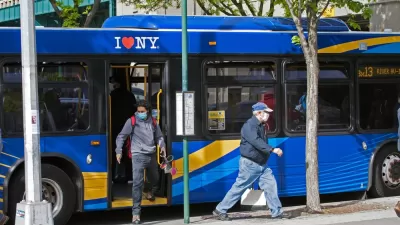Another example of how improving bus service design can benefit transit riders and transit systems emerges in New York City. More such local system redesigns are on the way soon in the Big Apple.

The MTA launched redesigned local bus service in the Bronx June 2022. Since then, buses are going faster with more riders on board, according to data shared recently by the New York MTA.
Dave Colon provides more detail on the changes and their results in an article for Streetsblog NYC.
Local buses ran 4 percent faster in the months after the redesign went into effect on the 13 routes the agency re-mapped, while overall speeds also increased borough-wide — by 2 percent on weekdays and 3 percent on weekends, according to the presentation.
Ridership, meanwhile, increased 6 percent after the redesign went into effect, Thompson said. The routes that received the most changes saw the biggest increases.
To revamp the system, according to Colon’s account of the changes, “the MTA made major changes to 13 of 46 routes, while also tweaking almost every line in the borough by streamlining routes and adding more space between stops, a process known as bus stop balancing.”
The Bronx changes are the first of a series of local bus service changes in the works by the MTA since 2019, adds Colon. Queens will be next, followed by Brooklyn.
Bu system redesigns have become popular since the city of Houston led the way with a redesign of the Metropolitan Transit Authority (Metro) bus system in 2015.
FULL STORY: Boogie Up: Speeds And Ridership Jump After Bronx Bus Route Changes

Alabama: Trump Terminates Settlements for Black Communities Harmed By Raw Sewage
Trump deemed the landmark civil rights agreement “illegal DEI and environmental justice policy.”

Planetizen Federal Action Tracker
A weekly monitor of how Trump’s orders and actions are impacting planners and planning in America.

The 120 Year Old Tiny Home Villages That Sheltered San Francisco’s Earthquake Refugees
More than a century ago, San Francisco mobilized to house thousands of residents displaced by the 1906 earthquake. Could their strategy offer a model for the present?

LA’s Tree Emergency Goes Beyond Vandalism
After a vandal destroyed dozens of downtown LA trees, Mayor Karen Bass vowed to replace them. Days later, she slashed the city’s tree budget.

Sacramento Leads Nation With Bus-Mounted Bike Lane Enforcement Cameras
The city is the first to use its bus-mounted traffic enforcement system to cite drivers who park or drive in bike lanes.

Seattle Voters Approve Social Housing Referendum
Voters approved a corporate tax to fund the city’s housing authority despite an opposition campaign funded by Amazon and Microsoft.
Urban Design for Planners 1: Software Tools
This six-course series explores essential urban design concepts using open source software and equips planners with the tools they need to participate fully in the urban design process.
Planning for Universal Design
Learn the tools for implementing Universal Design in planning regulations.
Ada County Highway District
Clanton & Associates, Inc.
Jessamine County Fiscal Court
Institute for Housing and Urban Development Studies (IHS)
City of Grandview
Harvard GSD Executive Education
Toledo-Lucas County Plan Commissions
Salt Lake City
NYU Wagner Graduate School of Public Service





























